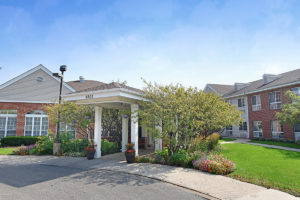
Many people choose to travel the globe during their retirement. You’ve worked hard your whole life, saved and sacrificed, and now it’s time to enjoy the years and fruits of your labor. While there are plenty of things that each unique individual needs to have on their packing lists, there are also critical items that are must-haves if you’re traveling as a senior. With springtime upon us and summer right around the corner, you likely have some vacations lined up, so it’s essential to have all your ducks in a row before you board your plane or hop on the train. Let’s look at some critical must-have travel items as you embark on your adventures!
Your Medical Essentials
You don’t have to be a senior to be someone that relies on prescribed medications they take every day to stay healthy. You want to make sure that you have all of your daily medications and supplements packed neatly and in a place accessible to you. You may already utilize Pill organizers, so it’s worth getting another one to take on your trip with you. If you have enough on hand from your doctor – or you could let them know about the length of your trip to get extra prescribed – it’s also worth taking extras and keeping them in a separate bag from the first set. If anything gets lost or stolen, you’re still not without your essential medication.
Rolling Luggage
When you think about your carry-on bag, you may not need much more than a sturdy strap, but things get different when it comes to your check in luggage. It’s best if you have a suitcase that rolls easily and isn’t putting strain on your joints and muscles. Even if you’re traveling with companions who could carry your traditional suitcase for you, they’ll have their own luggage. So, investing in a high-quality rolling suitcase that you can maneuver on your own is worth it – especially if you travel a lot. Make sure you test the product to be confident its zippers, handles, and any other mechanisms are easy for you to use. Rolling suitcases are a gamechanger and well worth it for your trip.
Hands-Free Bags
With all the sightseeing and excursions you’ll likely be involved in, you’ll have to have a bag that you can bring with you but doesn’t get in your way. Just because you’ve booked an all-day package for something doesn’t mean you won’t still need to take medication, need identification, or anything else you use in a day. The best bags for you while you’re out and about in the new city you’ve traveled to, are fannypacks or backpacks. While backpacks take a little more effort to take on and off, they can carry more. Fannypacks keep everything right at waist level and accessible through a zipper, making them more convenient. Make your decision based on how much you will need during the day and how long you’ll be away from your hotel room or resort. You could also take both and swap them out depending on what the day brings.
Reusable Water Bottles
If you’re doing your traveling during the summer months, you’ll want to make sure you’re staying adequately hydrated. Being out in the sun is excellent for our health but can quickly lead to dehydration if you’re not keeping sufficiently hydrated. The best way to ensure you’re getting your recommended daily water intake is to travel with a reusable water bottle. They even make slings that make carrying your bottle around with you all day a breeze. Additionally, since your bottle is reusable, you can fill it up throughout the day at various restaurants, museums, shopping malls, or anywhere else there is a clean water source.
Traveling is one of the greatest joys and life; making it to your golden years is something worth celebrating. Celebrating through travel is a way to enrich your life by experiencing new cultures, making new friends, and staying social. Not to mention it’s excellent for your health! Studies have shown those who take regular vacations are at a significantly decreased risk for stroke and cardiovascular issues. So, make sure you add the above-mentioned items to your travel lists this year and enjoy the ride. Happy trails!








